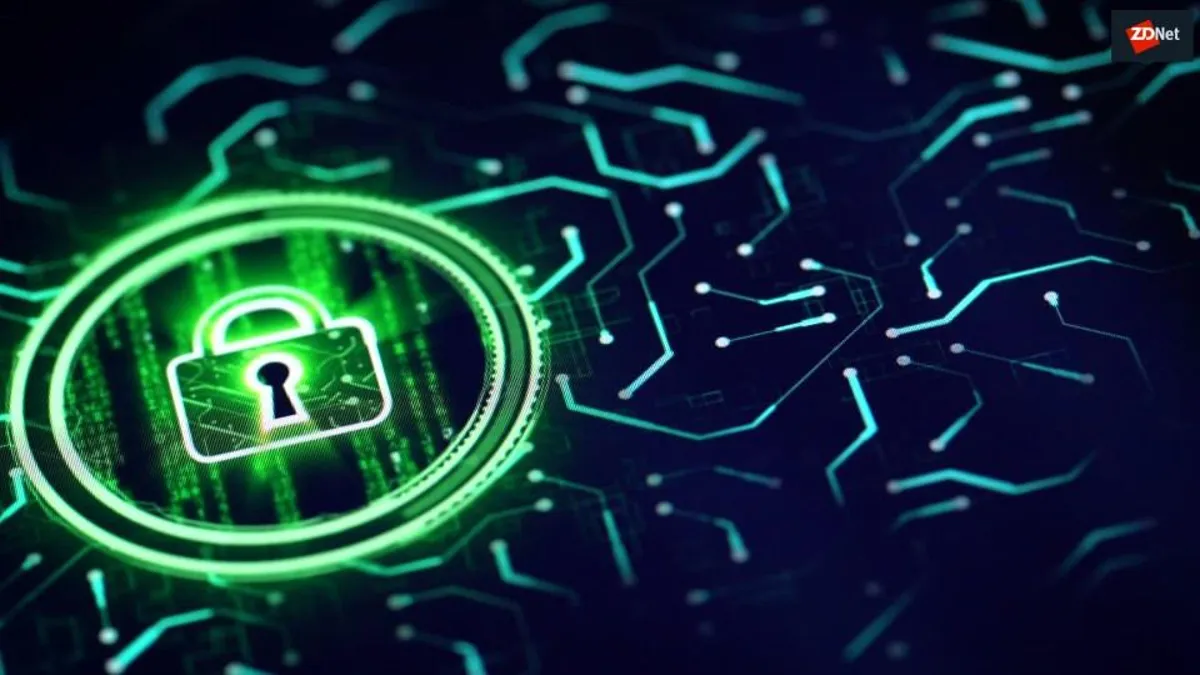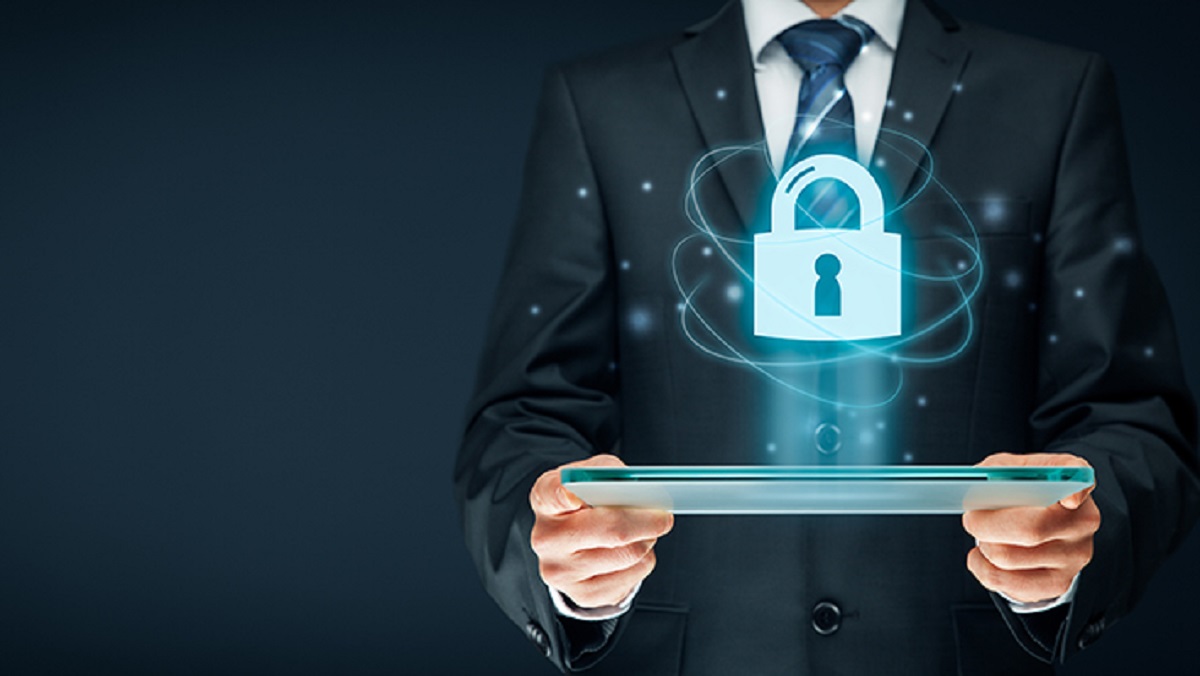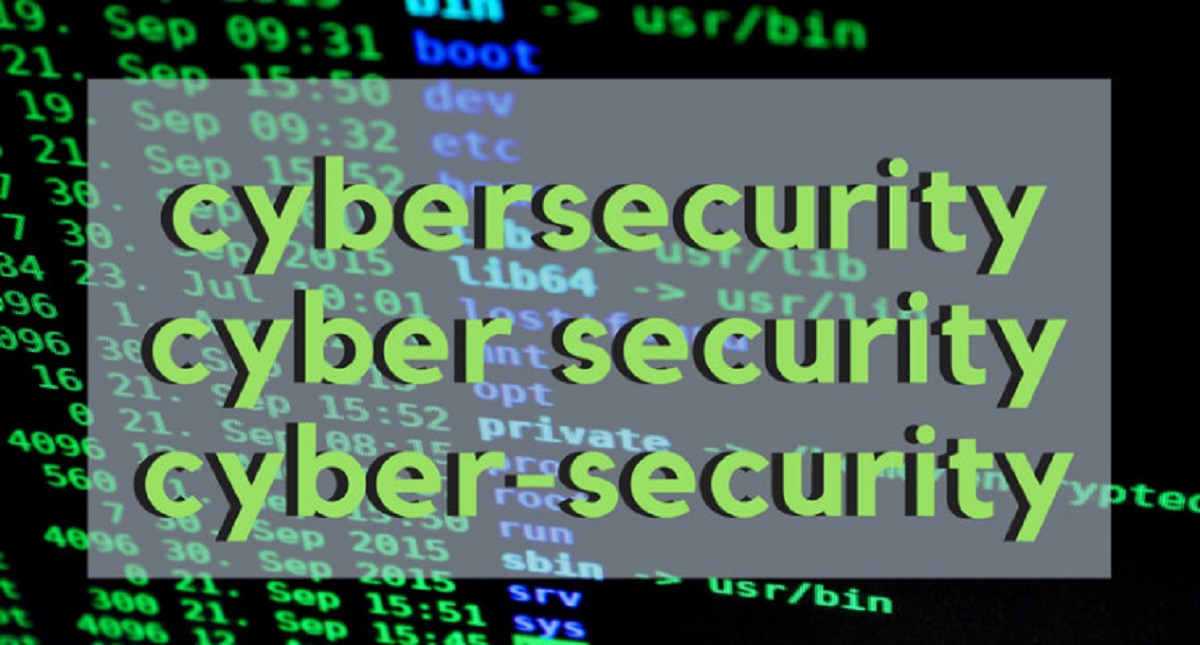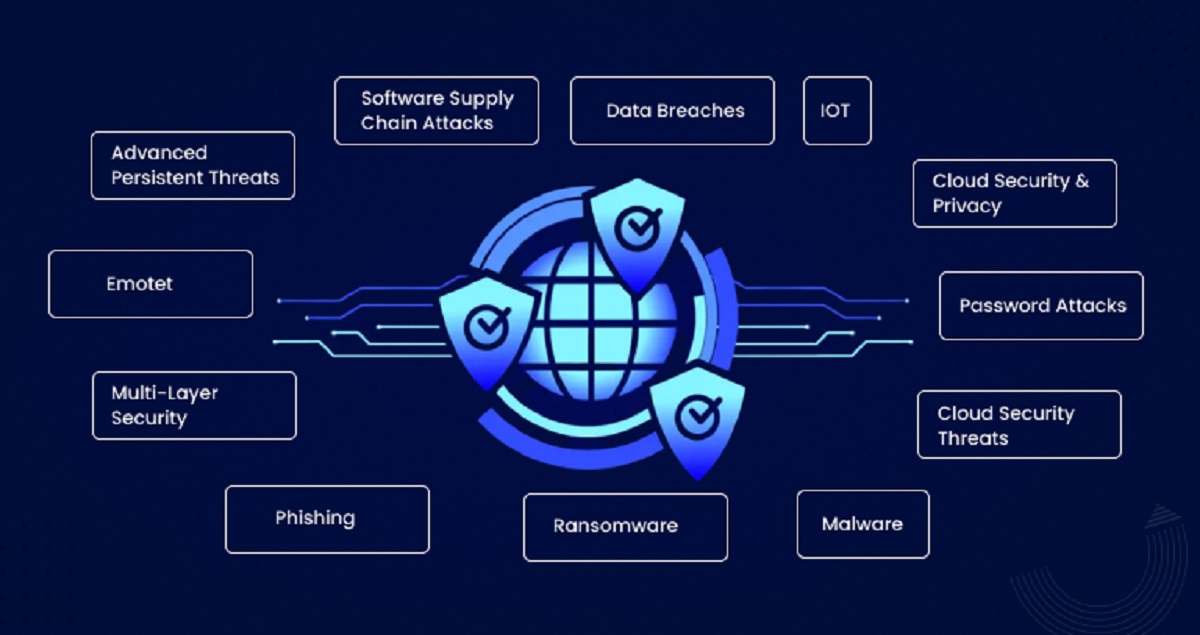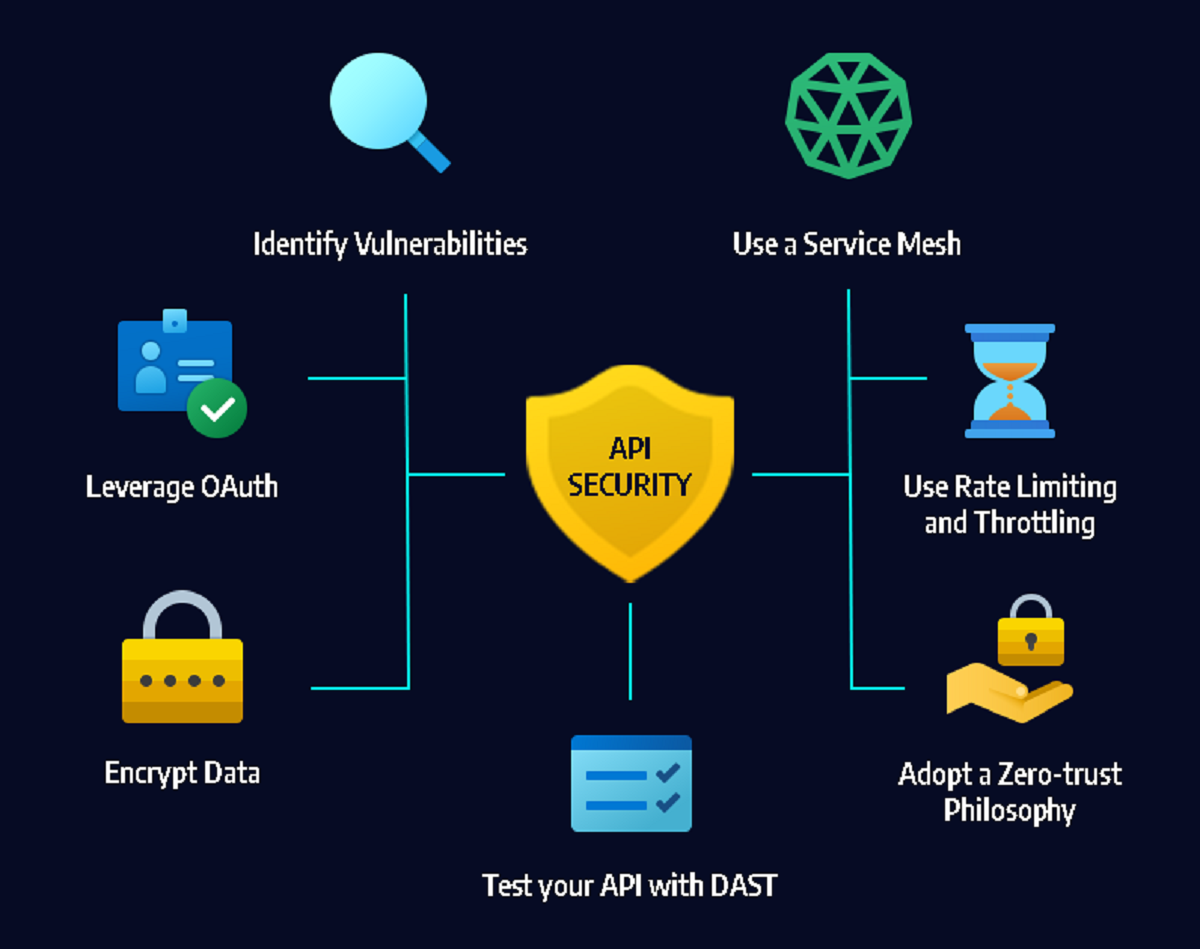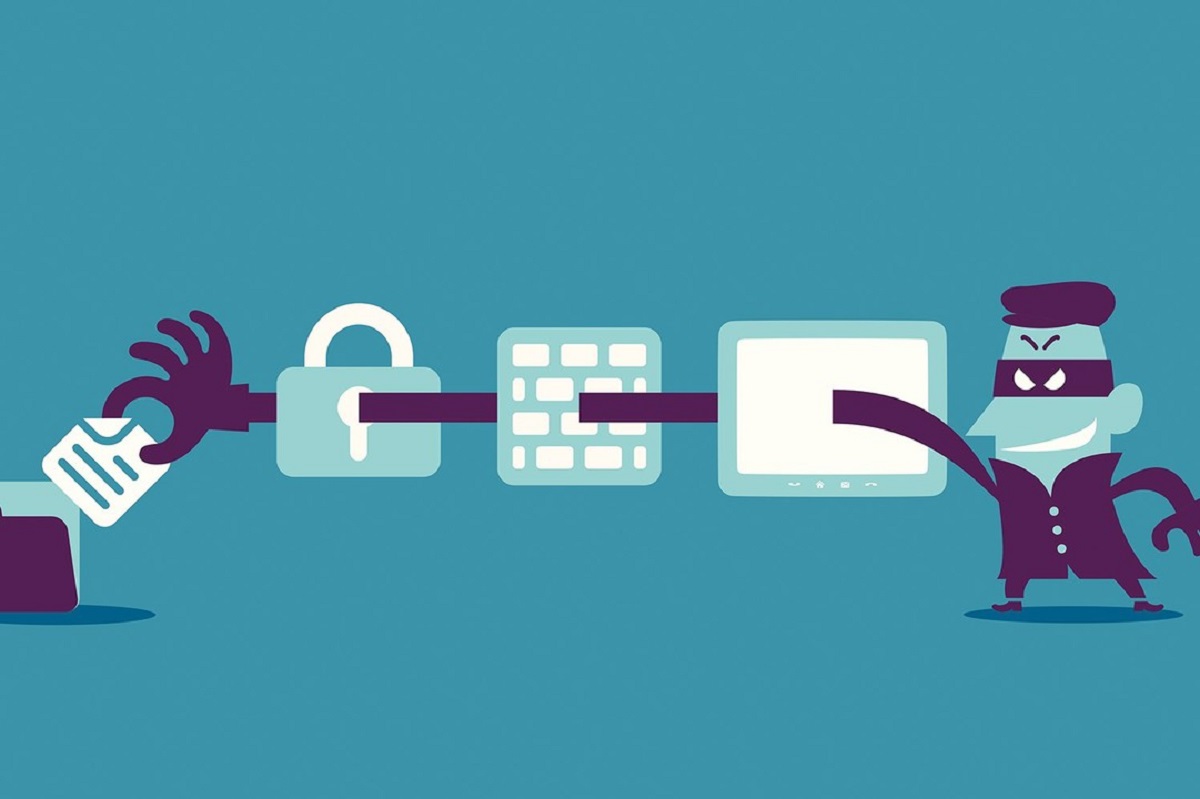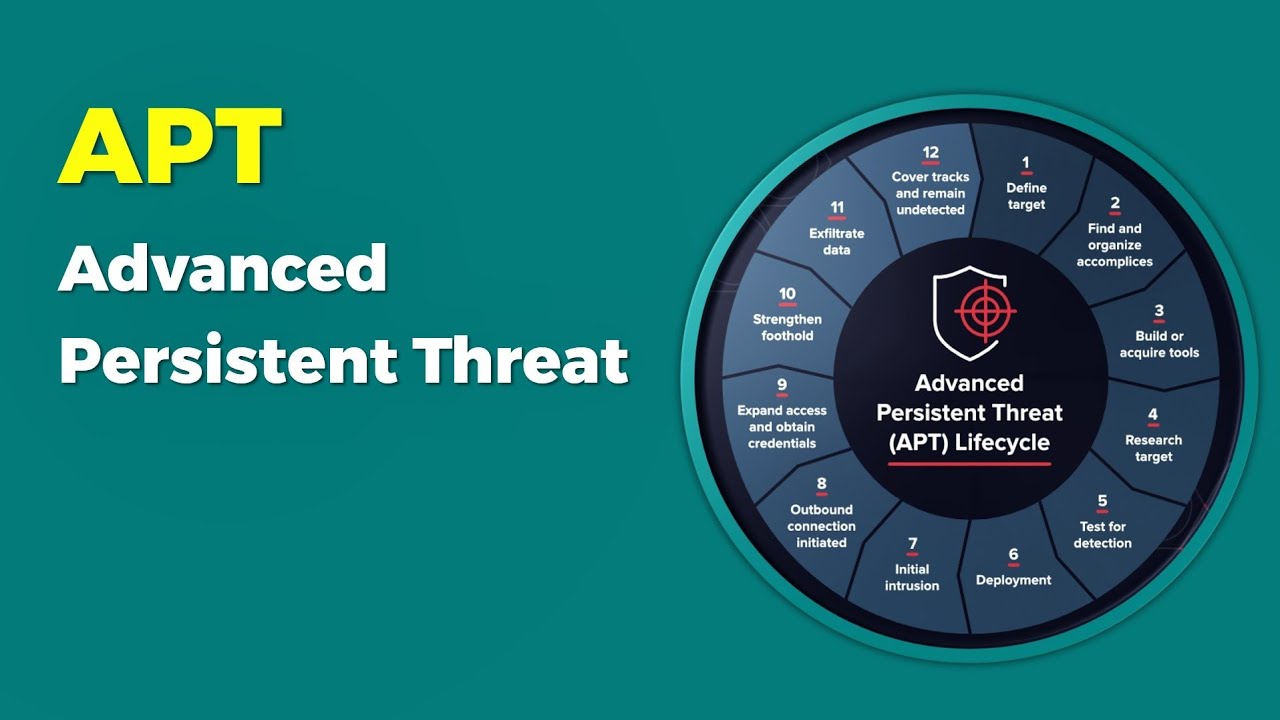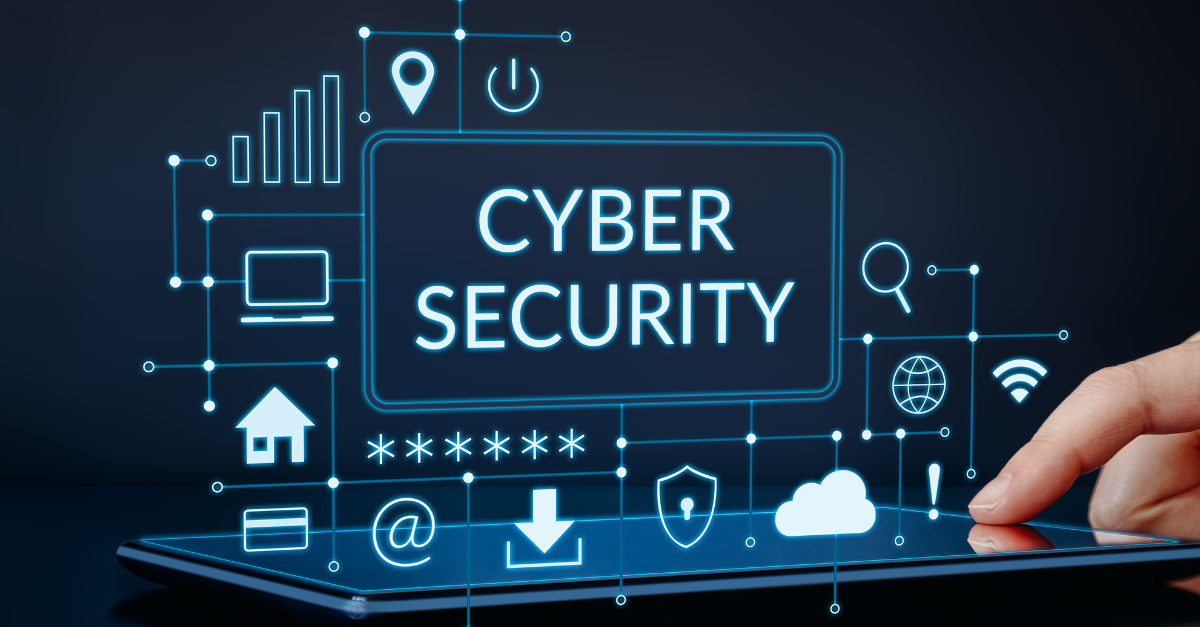Introduction
In today’s digital age, the transmission of personal information has become an integral part of our lives. From online shopping to social media interactions, we constantly share sensitive data such as credit card numbers, addresses, and even our personal thoughts and experiences. However, this convenience comes with inherent risks. Cybercriminals are continuously evolving their tactics to exploit vulnerabilities and gain unauthorized access to personal information.
As a result, strong cybersecurity measures are essential when transmitting personal information using digital signals. These measures aim to safeguard data privacy, maintain the confidentiality of sensitive information, and prevent identity theft or financial fraud. By employing robust cybersecurity practices, individuals, organizations, and even governments can mitigate the risks associated with transmitting personal data digitally.
This article will explore the reasons why strong cybersecurity is needed when transmitting personal information using digital signals. We will discuss the types of personal information at risk, the potential pitfalls of digital transmission, and the cybersecurity measures that can be implemented to protect personal data. By understanding the importance of cybersecurity in data transmission, individuals and organizations can take proactive steps to secure their information and minimize the risk of data breaches.
Definition of Personal Information
Personal information refers to any data that identifies or can be used to identify an individual. It includes both sensitive and non-sensitive information that is directly or indirectly linked to a person. This information can be collected through various channels, such as online forms, social media platforms, or even offline transactions.
Examples of personal information include but are not limited to:
- Full name
- Date of birth
- Social Security number
- Home address
- Email address
- Phone number
- Financial information (bank account details, credit card numbers)
- Medical records
- Biometric data (fingerprint, facial recognition)
- Online login credentials (username, password)
It is crucial to understand that personal information extends beyond basic identifying details. It encompasses any data that can be used to distinguish or trace an individual’s identity. As technology advances, new types of personal information are continuously emerging, including geolocation data, IP addresses, and online behavioral patterns.
The level of sensitivity associated with personal information varies. While some information may seem trivial on its own, when combined with other pieces of data, it can lead to the identification of an individual and potentially facilitate identity theft or other malicious activities. Hence, it is essential to treat all personal information with equal care and take appropriate measures to protect its confidentiality and integrity.
Importance of Protecting Personal Information
Protecting personal information is of utmost importance in today’s interconnected digital world. The prevalence of cyber threats and data breaches highlights the need for individuals and organizations to prioritize the security of sensitive data. Here are several key reasons why protecting personal information is crucial:
- Prevention of Identity Theft: Personal information serves as a gateway for cybercriminals to steal one’s identity. With access to sensitive details like social security numbers or financial information, hackers can impersonate individuals, open fraudulent accounts, or conduct unauthorized transactions.
- Maintaining Privacy: Personal information should be kept private and confidential. Breaches in data security can lead to invasion of privacy, compromising personal and professional relationships, and even exposing individuals to harassment or extortion.
- Protecting Financial Assets: Personal information, such as credit card details or bank account numbers, can be misused by malicious actors to carry out unauthorized transactions, resulting in financial loss for individuals and potentially damaging their credit history.
- Preserving Reputation: Data breaches can tarnish an individual’s or organization’s reputation. Once personal information is compromised, trust is eroded, and customers may question the ability to secure sensitive data, leading to a loss of business and opportunities.
- Compliance with Laws and Regulations: Many jurisdictions have enacted laws and regulations to govern the handling of personal information. Organizations must comply with these laws, such as the General Data Protection Regulation (GDPR) in the European Union or the California Consumer Privacy Act (CCPA) in the United States, to avoid legal consequences and maintain the trust of their customers.
By recognizing the importance of protecting personal information, individuals can take proactive steps to safeguard their data. Similarly, organizations must implement robust cybersecurity measures to ensure the privacy and security of their customers’ information, building trust and loyalty in the process.
Types of Personal Information
Personal information encompasses a wide range of data that can be used to identify or distinguish an individual. Understanding the different types of personal information is crucial for implementing effective cybersecurity measures. Here are some common categories of personal information:
- Identifying Information: This includes details that directly identify an individual, such as full name, date of birth, social security number, passport number, or driver’s license number. These pieces of information are often used in official identification documents and are highly sensitive.
- Contact Information: Contact details like home address, email address, phone number, or social media handles are essential for communication purposes. Cybercriminals can exploit this information to target individuals with scams, phishing attempts, or physical threats.
- Financial Information: Bank account numbers, credit card details, or financial transaction records are highly coveted by hackers. Unauthorized access to this information can lead to identity theft, fraudulent charges, or draining of bank accounts.
- Health and Medical Records: Personal health information, such as medical history, prescription details, or insurance information, must be protected to maintain confidentiality and comply with data privacy regulations like the Health Insurance Portability and Accountability Act (HIPAA).
- Biometric Data: Biometric identifiers, including fingerprints, facial recognition data, or retina scans, are increasingly used for authentication purposes. It is crucial to protect this data to prevent unauthorized access or misuse.
- Online Activity and Behavioral Data: Internet browsing history, search queries, IP addresses, or location information collected by websites and online platforms make up a significant portion of personal information. This data is often used for targeted advertising but can also be exploited by cybercriminals for tracking or profiling purposes.
It is important to note that personal information can vary depending on cultural, legal, and technological contexts. As new technologies emerge, additional types of personal information may appear, necessitating continuous adaptation and vigilance in protecting sensitive data.
Risks Associated with Transmitting Personal Information Digitally
Transmitting personal information digitally comes with inherent risks that can compromise the privacy and security of individuals’ sensitive data. Here are some of the key risks associated with digital transmission:
- Data Breaches: Digital transmission of personal information increases the risk of data breaches. Cybercriminals constantly target vulnerable systems to gain unauthorized access to databases containing personal information. A single breach can expose massive amounts of sensitive data, leading to identity theft, financial fraud, or reputational damage.
- Interception and Eavesdropping: Transmitting personal information over unsecured networks or improperly encrypted channels can make it susceptible to interception and eavesdropping by cybercriminals. This allows attackers to capture and exploit the data for malicious purposes.
- Malware and Phishing Attacks: Cybercriminals often use malware-infected links, email attachments, or fraudulent websites to trick individuals into revealing personal information. Phishing attacks can lead to the disclosure of login credentials, credit card numbers, or other sensitive data.
- Identity Theft: Transmitting personal information digitally puts individuals at risk of identity theft. If attackers gain access to personal data, they can assume the identity of the victim, opening fraudulent accounts, applying for loans, or conducting illegal activities using the stolen information.
- Unsecure Wi-Fi Networks: Connecting to unsecured Wi-Fi networks, especially in public places, poses a significant risk. Cybercriminals can intercept data transmitted over these networks, capturing personal information without the user’s knowledge.
- Human Error: Human error in managing personal information can result in unintended disclosure or unauthorized access. Accidentally sending sensitive information to the wrong recipient or falling victim to social engineering attacks can have serious consequences for individuals and organizations.
It is crucial to be aware of these risks and take appropriate measures to mitigate them. Implementing robust cybersecurity protocols and following best practices for data transmission can significantly reduce the chances of unauthorized access and protect personal information from falling into the wrong hands.
Cybersecurity Measures to Protect Personal Information During Transmission
In order to safeguard personal information during its transmission, robust cybersecurity measures must be employed. These measures aim to protect the confidentiality, integrity, and availability of data. Here are some key cybersecurity measures that can be implemented to protect personal information during transmission:
- Encryption: Encryption is a fundamental method of protecting personal information during transmission. It converts the data into an unreadable format, making it difficult for unauthorized individuals to interpret the information. Implementing strong encryption protocols, such as HTTPS for web browsing or secure email protocols, ensures that data sent over the network is securely encrypted.
- Two-Factor Authentication: Implementing two-factor authentication (2FA) adds an extra layer of security when transmitting personal information. This method requires users to provide a second form of verification, such as a unique code or fingerprint, in addition to a password. 2FA helps prevent unauthorized access, even if the password is compromised.
- Firewalls and Intrusion Detection Systems: Installing firewalls and intrusion detection systems (IDS) helps protect personal information by monitoring and filtering network traffic. These security measures detect and block suspicious activities, preventing unauthorized access to personal data.
- Secure Communication Protocols: Using secure communication protocols, such as Secure Socket Layer (SSL) or Transport Layer Security (TLS), ensures the secure transmission of personal information over networks. These protocols establish a secure and encrypted connection between the sender and receiver, protecting data from interception or tampering.
- Regular Software Updates: Keeping software and devices up to date with the latest security patches is crucial for protecting personal information during transmission. Regular updates address known vulnerabilities and security weaknesses, reducing the risk of exploitation by cybercriminals.
- Employee Training and Awareness: Educating employees about the importance of protecting personal information and providing training on best practices for data transmission is vital. Employees should be aware of potential risks, such as phishing attacks or unsecured Wi-Fi networks, and how to handle personal information securely when transmitting it.
Implementing a combination of these cybersecurity measures helps mitigate the risks associated with transmitting personal information digitally. By adopting a proactive approach to cybersecurity, individuals and organizations can enhance the protection of personal information and maintain the trust of their stakeholders.
Encryption
Encryption plays a crucial role in protecting personal information during transmission. It is a process that converts data into an unreadable format, known as ciphertext, making it unintelligible to unauthorized individuals. Encryption ensures that even if data is intercepted, it remains secure and inaccessible without the decryption key. Here are some key aspects of encryption in data transmission:
- Types of Encryption: There are two main types of encryption: symmetric and asymmetric. Symmetric encryption uses a single key for both encryption and decryption, while asymmetric encryption involves a pair of keys – a public key for encryption and a private key for decryption. Both types provide effective means to secure transmitted data.
- Secure Protocols: Secure communication protocols, such as HTTPS, employ encryption to protect personal information during online transactions. These protocols use SSL or TLS encryption to establish a secure connection between the user’s device and the website, ensuring that data transmitted between them remains confidential.
- End-to-End Encryption: End-to-end encryption is a method where data is encrypted on the sender’s device and can only be decrypted by the intended recipient. This ensures that even if the data is intercepted at any point during transmission, it remains encrypted and unreadable. End-to-end encryption is commonly used in messaging apps, email clients, and file-sharing services.
- Data Integrity: Encryption not only protects the confidentiality of personal information but also ensures data integrity. By using encryption algorithms that include integrity checks, any tampering or unauthorized modifications to the encrypted data can be easily detected, alerting the recipient that the data has been compromised.
- Key Management: Proper key management is essential for effective encryption. Encryption keys should be securely stored and shared only with authorized parties. Regularly updating encryption keys and adhering to industry-standard key management practices help maintain the security of encrypted data.
- Regulatory Compliance: Encryption is often a requirement for compliance with data protection regulations. For example, the GDPR mandates the encryption of personal data as a security measure to protect individuals’ privacy.
Encryption is an essential component of cybersecurity measures to protect personal information during transmission. By implementing strong encryption protocols and adopting best practices for key management, individuals and organizations can significantly enhance the security of their data and mitigate the risk of unauthorized access or data breaches.
Two-Factor Authentication
Two-factor authentication (2FA) is an additional layer of security that helps protect personal information during transmission. In addition to a password, 2FA requires users to provide a second form of verification to access their accounts or complete transactions. This method adds an extra level of protection against unauthorized access, even if a password is compromised. Here are key aspects of two-factor authentication:
- Types of Verification: Two-factor authentication can involve various types of verification, such as:
- One-time passwords (OTP) sent via text message or generated by an authentication app.
- Biometric factors, including fingerprint scans, facial recognition, or voice verification.
- Hardware tokens or smartcards that generate unique verification codes.
These additional verification methods make it difficult for attackers to gain unauthorized access to personal information, as they would need to possess both the password and the second factor of authentication.
- Increased Security: By incorporating two-factor authentication, personal accounts and sensitive data become significantly more secure. Even if a password is compromised through hacking or phishing attacks, the second factor acts as an additional barrier, preventing unauthorized access.
- Widespread Adoption: Many online platforms, such as email services, social media networks, banking institutions, and e-commerce websites, offer two-factor authentication as an optional security measure. Users are encouraged to enable this feature to enhance the protection of their personal information.
- Usability: Two-factor authentication methods have become more user-friendly over time. Mobile apps and software-based authentication tools generate verification codes, making the process quick and convenient. Additionally, biometric authentication methods make use of the built-in sensors on smartphones and other devices, streamlining the user experience.
- Authentication Apps: Authentication apps, such as Google Authenticator or Microsoft Authenticator, have gained popularity for generating one-time passwords without relying on SMS. These apps use time-based algorithms to generate unique codes, ensuring a secure and reliable method of verification.
- Backup Options: It is important to have backup options for two-factor authentication in case the primary method is unavailable. Some platforms provide backup codes, which can be used if the primary verification method is inaccessible. It is crucial to store these backup codes securely.
Implementing two-factor authentication significantly enhances the security of personal information during transmission and helps safeguard against unauthorized access. By enabling this feature and utilizing various verification methods, individuals can effectively protect their accounts and ensure the privacy and integrity of their personal data.
Firewalls and Intrusion Detection Systems
Firewalls and Intrusion Detection Systems (IDS) are essential cybersecurity measures in protecting personal information during transmission. These technologies help monitor and control network traffic, detect potential threats, and prevent unauthorized access to sensitive data. Here’s an overview of how firewalls and IDS contribute to data protection:
- Firewalls: Firewalls act as a security barrier between a trusted internal network and an untrusted external network, such as the internet. Firewalls inspect incoming and outgoing network traffic based on predetermined rules. They can be implemented as software or hardware devices. Firewalls analyze data packets and determine whether to allow or block their transmission based on parameters like IP addresses, port numbers, or application protocols.
- Intrusion Detection Systems (IDS): IDS is a security technology that monitors network traffic to identify and respond to potential threats. IDS uses intelligent algorithms and signature-based detection to analyze network packets and recognize patterns or anomalies associated with known attack signatures. When a suspicious activity or intrusion is detected, IDS generates alerts or takes preventive action to safeguard the network and the personal information traversing it.
- Network Segmentation: Firewalls can be used to segment networks into isolated zones, each with different security requirements. By separating networks and implementing firewalls between them, sensitive personal information can be better protected. If one segment of the network is compromised, firewalls prevent lateral movement across different zones, limiting the potential impact of an intrusion.
- Intrusion Prevention Systems (IPS): IPS is an advanced security technology that combines the functionalities of firewalls and IDS. IPS actively monitors network traffic, identifies potential threats, and automatically takes preventive measures to block or mitigate them. IPS can immediately react to known malicious activities, reducing the response time to potential attacks.
- Logging and Auditing: Firewalls and IDS often provide logging and auditing capabilities, capturing information about network traffic, detected threats, and attempted intrusions. These logs can be used for forensic analysis, intrusion investigation, or compliance purposes, enabling organizations to track and respond to security incidents effectively.
- Regular Updates and Maintenance: To ensure the effectiveness of firewalls and IDS, regular updates and maintenance are crucial. Patching vulnerabilities, updating intrusion detection signatures, and staying up to date with emerging threats help ensure that these security measures provide the highest level of protection.
By implementing firewalls and IDS, organizations can significantly enhance their defense against unauthorized access and protect personal information during transmission. These technologies work together to create multiple layers of security, enabling proactive monitoring, detection, and prevention of potential threats. It is important to select and configure these security measures appropriately based on the specific needs and requirements of the network and the personal information being transmitted.
Secure Communication Protocols
Secure communication protocols play a crucial role in protecting personal information during transmission. These protocols establish a secure and encrypted connection between the sender and receiver, ensuring the confidentiality and integrity of the data being exchanged. Here are some key aspects of secure communication protocols:
- Transport Layer Security (TLS) and Secure Socket Layer (SSL): TLS and SSL are cryptographic protocols that provide secure communication over a network. They establish an encrypted connection between a client and a server, protecting personal information from interception or tampering. TLS is the successor to SSL and is commonly used to secure website connections, email transmissions, and other network applications.
- Data Encryption: Secure communication protocols employ encryption techniques to protect personal information. When data is transmitted, it is encrypted using cryptographic algorithms, ensuring that only the intended recipient can decrypt and access the information. This encryption provides an additional layer of privacy and security, preventing unauthorized access to the transmitted data.
- Authentication and Digital Certificates: Secure communication protocols utilize authentication mechanisms to verify the identity of the communicating parties. Digital certificates issued by trusted Certificate Authorities (CAs) are used to validate the authenticity of a website or an application. This helps users ensure that they are securely transmitting personal information to legitimate and trustworthy entities.
- Forward Secrecy: Forward secrecy ensures that even if an encryption key is compromised, previously transmitted data remains secure. Secure communication protocols implement ephemeral keys that are used only for a single session. This means that even if an attacker gains access to the encryption key, they cannot decrypt previously exchanged data.
- Perfect Forward Secrecy (PFS): PFS is an extension of forward secrecy that guarantees that even if an attacker compromises a server’s private key, it does not allow them to decrypt previously intercepted data. This is achieved by generating unique session keys for each session, preserving the confidentiality of the transmitted information.
- Compliance with Data Protection Regulations: Utilizing secure communication protocols is often a requirement for compliance with data protection regulations like the GDPR. Organizations that handle personal information must ensure that the transmission of data adheres to industry-standard security measures to maintain compliance and protect the privacy of individuals’ personal information.
By implementing secure communication protocols, organizations and individuals can establish secure and private connections for transmitting personal information. The adoption of these protocols ensures that data remains confidential and protected from unauthorized access, reducing the risk of data breaches and maintaining the trust of users in the digital landscape.
Regular Software Updates
Regular software updates are critical in protecting personal information during transmission. Software updates, including operating systems, applications, and firmware, often contain patches and security fixes that address known vulnerabilities. Neglecting these updates leaves systems vulnerable to exploitation by cybercriminals. Here are key reasons why regular software updates are important:
- Vulnerability Patching: Software updates often include patches that fix vulnerabilities discovered in previous versions. These vulnerabilities, if left unaddressed, can be exploited by attackers to gain unauthorized access to personal information or compromise system security. Regular updates ensure that these vulnerabilities are identified and mitigated promptly.
- Security Enhancements: Software updates frequently introduce security enhancements to protect against evolving threats. They may include improvements to encryption algorithms, stronger authentication protocols, or additional security features. Updating software ensures that these security enhancements are implemented, bolstering the protection of personal information.
- Protection Against Exploits: Cybercriminals constantly search for vulnerabilities in software to exploit. Regular updates help protect against newly discovered exploits by providing fixes and countermeasures against known attack vectors. Updating software reduces the risk of falling victim to cyber-attacks that target personal information during transmission.
- Compliance Requirements: Many industries and jurisdictions have specific compliance requirements regarding software updates. Adhering to these requirements helps ensure the security and privacy of personal information and helps organizations avoid penalties and legal consequences.
- Compatibility and Stability: Regular software updates also address compatibility issues and improve system stability. Keeping software up to date ensures that it functions smoothly and minimizes the risk of crashes or errors that could lead to data loss or corruption.
- Vendor Support: Regular updates ensure that users continue to receive vendor support. In case of any issues or security concerns, vendors generally offer technical assistance and respond to reported vulnerabilities more promptly for up-to-date software versions.
Keeping software regularly updated is a crucial aspect of maintaining the security and integrity of personal information during transmission. By promptly installing updates, individuals and organizations can fortify their systems against potential threats, reduce the risk of data breaches, and safeguard the privacy of personal information.
Employee Training and Awareness
Employee training and awareness are crucial components of protecting personal information during transmission. It is essential to educate employees about cybersecurity best practices and raise their awareness of the potential risks and threats associated with handling sensitive data. Here’s why employee training is important:
- Recognizing Phishing Attacks: Training employees to identify and avoid phishing attacks is critical. Phishing emails and messages often attempt to trick individuals into revealing personal information or login credentials. By educating employees about common phishing tactics and providing guidance on how to verify the authenticity of communication, organizations can prevent unauthorized access to personal information.
- Using Strong Passwords: Employees should be trained to use strong, unique passwords and avoid password reuse across different accounts. Additionally, implementing multi-factor authentication enhances the security of personal information by requiring an additional layer of verification beyond passwords.
- Avoiding Unsecured Networks: Employees should be aware of the risks associated with connecting to unsecured Wi-Fi networks. Training them to verify the security of the network before transmitting personal information helps mitigate the risk of data interception.
- Secure File Sharing and Transfer: Proper training ensures that employees understand the importance of secure file sharing and transfer methods. Encouraging the use of encrypted file transfer protocols or secure file sharing platforms helps protect personal information during transmission.
- Safe Web Browsing: Employees should be educated about safe web browsing practices, including avoiding suspicious websites and clicking on unknown links. This helps reduce the risk of exposing personal information to malware or other cyber threats.
- Data Handling and Disposal: Training employees on proper data handling and disposal techniques is crucial, as mishandling personal information can lead to data breaches. Educating employees on the importance of securely storing and disposing of personal information helps protect it during transmission and beyond.
- Reporting Security Incidents: Encouraging employees to report any suspicious activity or security incidents promptly is vital. Providing clear guidelines on how to report incidents ensures that any potential breaches or vulnerabilities are addressed promptly, minimizing the impact on personal information.
- Maintaining Awareness of Data Privacy Regulations: Employees should be trained on data privacy regulations and compliance requirements relevant to their roles and responsibilities. This includes understanding the legal obligations surrounding personal information protection and handling.
By investing in employee training and awareness programs, organizations can cultivate a security-conscious culture and empower employees to actively contribute to the protection of personal information during transmission. Regular training sessions and ongoing awareness campaigns ensure that employees remain up to date with the latest cybersecurity practices and threats, ultimately reducing the risk of data breaches and safeguarding the privacy of personal information.
Conclusion
Protecting personal information during its transmission is of paramount importance in today’s digital landscape. Cybercriminals are continually evolving their tactics, making it crucial to implement strong cybersecurity measures to safeguard sensitive data. From the use of secure communication protocols to employee training and awareness programs, various strategies can be employed to mitigate the risks associated with transmitting personal information digitally.
Understanding the types of personal information at risk and the potential pitfalls in digital transmission is the first step towards implementing effective cybersecurity measures. Encryption, two-factor authentication, firewalls, and intrusion detection systems all play critical roles in securing personal information during transmission. Employing these security measures helps prevent data breaches, identity theft, and other malicious activities.
Regular software updates are essential in addressing vulnerabilities and ensuring the latest security enhancements are implemented. Additionally, organizations must focus on training employees and fostering a culture of cybersecurity awareness. Educating employees about phishing attacks, safe web browsing practices, and proper data handling is vital in safeguarding personal information during transmission.
Ultimately, protecting personal information during transmission requires a multi-layered approach that combines technical measures, best practices, and ongoing education. By implementing these cybersecurity measures and fostering a security-conscious culture, organizations and individuals can enhance data privacy, maintain the integrity of personal information, and instill trust in the digital ecosystem.







